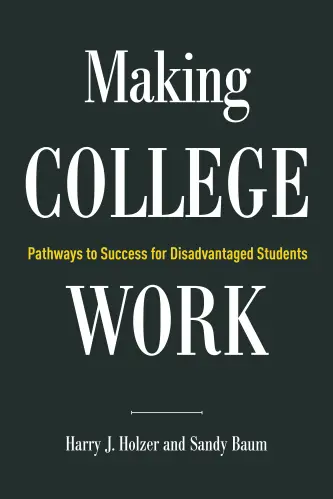This article originally appeared in The Hill on September 1, 2017.
We are about to celebrate our first Labor Day since the 2016 election, and the plight of non-college educated working Americans is getting a great deal of attention — as it should.
The earnings of Americans with a high school education or less have declined over the past several decades, and they have fallen far behind those with college degrees. To remedy this problem, President Trump has embraced barriers to trade and immigration, even though these would do much more harm than good to the U.S. economy.
Others on the political left argue for dramatic increases in the minimum wage — up to $15 or higher — which could create large job losses.
In our new book, we argue that the best hope for improving the earnings of working Americans lies in a dramatic expansion in their attainment of skills that the labor market values. Four-year college or liberal arts education is not for everyone, and many people need stronger alternative pathways to skills and the labor market.
Our public community and technical colleges have great potential to provide occupational training and workforce skills in high-demand jobs that offer good pay to a much greater share of the population than they do today. But current outcomes there, and the policies and practices that create them, leave us far short of that potential.
For one thing, completion rates for students pursuing associate degrees are extremely low — in the range of 20 to 30 percent — and even worse for disadvantaged or first-generation college students. Even when students complete associate degrees, too many — up to 40 percent in some states — receive terminal associate degrees in fields like “liberal studies” or “general studies.”
These degrees are fine for those who transfer to four-year colleges and obtain bachelor’s (BA) degrees, but only about 14 percent of community college students do so successfully. For those who don’t, these general degrees have little labor market value.
Four-year college or liberal arts education is not for everyone, and many people need stronger alternative pathways to skills and the labor market.
This is especially troubling in a period when the labor market has become fairly tight, with U.S. unemployment rates low and job vacancy rates high. Employers in a range of industries report difficulty finding sufficiently skilled workers to fill well-paying jobs.
These industries, including health care, advanced manufacturing, construction and transportation and logistics, have well-paying jobs for workers without BA degrees, but workers must obtain a range of occupational skills that many now lack to get these jobs.
What causes the low completion and attainment of credentials with labor market value at community colleges? Many students arrive there with very weak basic skills, too little knowledge of how college works, minimal personal and family resources or pressure to work full time and support their families, making academic progress difficult.
But these problems are made worse by certain characteristics of the institutions themselves. Our community colleges have too few resources, especially given the concentration of disadvantaged students there and the supports they need.
The colleges provide too little guidance to students, especially about pathways to successful careers. They also have little incentive to respond to the labor market, since they often get the same subsidies from the state regardless of whether students complete any credential and regardless of what they study.
Since programs for high-demand jobs and sectors are often in technical areas and require expensive adjunct faculty and equipment, it often makes little sense for the colleges to spend their scarce resources on expanding these programs.
To remedy these problems, we should strengthen a range of supports for disadvantaged community college students, including the skill remediation many need when (or before) they arrive. We should also simplify financial aid and tie it more closely to academic progress.
But we must also reform the colleges themselves in a number of ways. We should increase the public resources that the colleges educating large numbers of disadvantaged students receive, either from state or federal governments, but target new resources only on occupational preparation for high-demand sectors and important services like career counseling or tutoring.
In return for higher resources, states would need to strengthen the incentives colleges face to expand student attainment of credentials in high-demand fields.
Many states are already beginning to tie their higher education subsidies at public colleges and universities to student outcomes like credit attainment or program completion. But they should also make subsidies for community colleges depend on the later earnings of students and tie any new federal resources to state adoption of accountability based on these labor market outcomes.
Tying new resources and subsidies to the post-college employment outcomes of disadvantaged or first-generation students would further strengthen both the capacity and the incentives of community colleges to provide more students with the skills they need for labor market success.
We have ignored the plight of non-college educated Americans for far too long. This Labor Day, we should pledge to help them — not by exploiting their fears and imposing harmful economic policies, but by improving the opportunities they face for attaining skills that will truly improve their earnings over time.






Commentary
Op-edLabor Day lesson: US workers can get better pay via better training
September 15, 2017